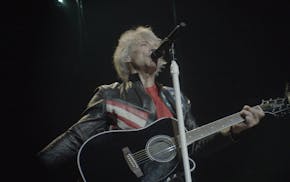Fragments. Portents, foreshadowing.
Slowly gathered, sorted. Coalescing. A stream — small, then surging.
That was the experience of reading "1947: Where Now Begins," Elisabeth Åsbrink's nonfiction account of a momentous year.
It was a year that brought us flying saucers and the shattering of the sound barrier. It saw the founding of the CIA, the end of the British Empire and the first computer bug — literally, a moth lodged in a room-sized electromechanical brain.
But it is Europe that is at the heart of Åsbrink's book. A continent devastated by world war, where genocidal monsters were being put to trial while the homeless, friendless refugees they created roamed the land.
Some of the monsters were escaping to South America and to Scandinavia, both places where wealthy fascists were eager to see the German experiment in Aryan superiority continue.
Åsbrink, a Swede, collected much of her material from 365 daily editions of Sweden's largest newspapers. Some items appear trivial yet loom important with seven decades of hindsight. Others can be seen immediately as significant.
The year and the book begin slowly, with a feeling of disconnection. But as they roll on, Åsbrink's fragments take shape as a coherent form, much as an artwork that creates one large picture by putting together many small ones.
And the central theme that finally emerges is that of the Middle East — the struggle between Jews looking for a homeland and Arabs seeking to keep hold of their own.
In a section midway through the year, Åsbrink steps away from her chronological framework to tell the tale of her own family — a tale familiar to millions descended from the millions who were murdered during that time of madness.
Jews torn from their comfortable lives. Persecuted, then exterminated. Some survived — at times through heroism, at other times through random fortune — to keep their family's story alive.
Among them were Åsbrink's grandmother, Lilly, and her father, György.
Åsbrink introduces a clock metaphor to explain the crazy feeling of the year. Time has no meaning. Past, present and future are jumbled together, and our senses are unreliable.
The metaphor doesn't really work, because she doesn't stick with it. She comes back to it several times during her tale, but it feels manufactured.
No matter. Her story develops a power that needs no metaphor to help explain it. It's a tale of the things that make up the essence of human existence: love, family, uncertainty, horror, belonging.
And the question of how we creatures cope when the unthinkable becomes reality.
John Reinan is a Star Tribune reporter. On Twitter: @StribGuy.
1947: Where Now Begins
By: Elisabeth Åsbrink, translated from the Swedish by Fiona Graham.
Publisher: The Other Press, 280 pages, $25.95.

The Biden administration is tweaking rules on airline fees and refunds, saying it'll help consumers

3 hearty salads to kick off salad season
Ask Amy: Late mom's behavior still an issue

TV review: Bon Jovi documentary goes down in a blaze of boredom

